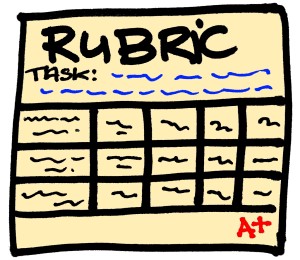Rubrics: A Teacher’s Best Friend or Worst Nightmare?
Something that seems as straightforward as outlining four varying levels of accomplishment is far more complex than most people may expect. With the pressure of having to justify a given mark to students, teachers, or administrators, teachers have to be sure that the rubric provides adequate and accurate information about what is expected of the students’ work. All that work just to let a student know what mark they achieved? It’s far more than that. As Andrade states in her article Teaching With Rubrics: The Good, The Bad, And The Ugly:
“We use them to clarify our learning goals, design instruction that addresses those goals, communicate the goals to students, guide our feedback on students’ progress toward the goals, and judge final products in terms of the degree to which the goals were met” (page 27).

We all know how busy teacher’s are, which is why I found comfort in the fact that rubrics are not just simply statements of student achievement; rather, they are a product of the planning, implementation, and assessment processes. But what happens when we have students learning at different levels in our classroom (i.e. IEPs)?
When it comes to instructing students at varying levels, Cooper encourages everyone to adopt “differentiation”:
“[…] beginning with the same unit plan, lesson, or assessment task and then differentiating each of these according to the needs of groups of students in a given class” (page 136).
In Cooper’s text, we also learned that it’s not necessary to create rubrics for each individual student. As long as the content standards are in line with what is expected of each student, then the rubric can remain the same; the requirements of whatever is being graded will be the only thing that actually differs.
In conclusion, rubrics are a great tool, not only for the teacher but for students as well. Rubrics outline what is expected of them and what is required to achieve each specific grade level. Perhaps more importantly, rubrics answer the common question, “Why am I learning this?” by display to students the various learning outcomes that are clearly outlined.
I agree that it is super when we think of rubrics as a tool for teachers and students! Once you get the hang of it, they aren’t that difficult to create!